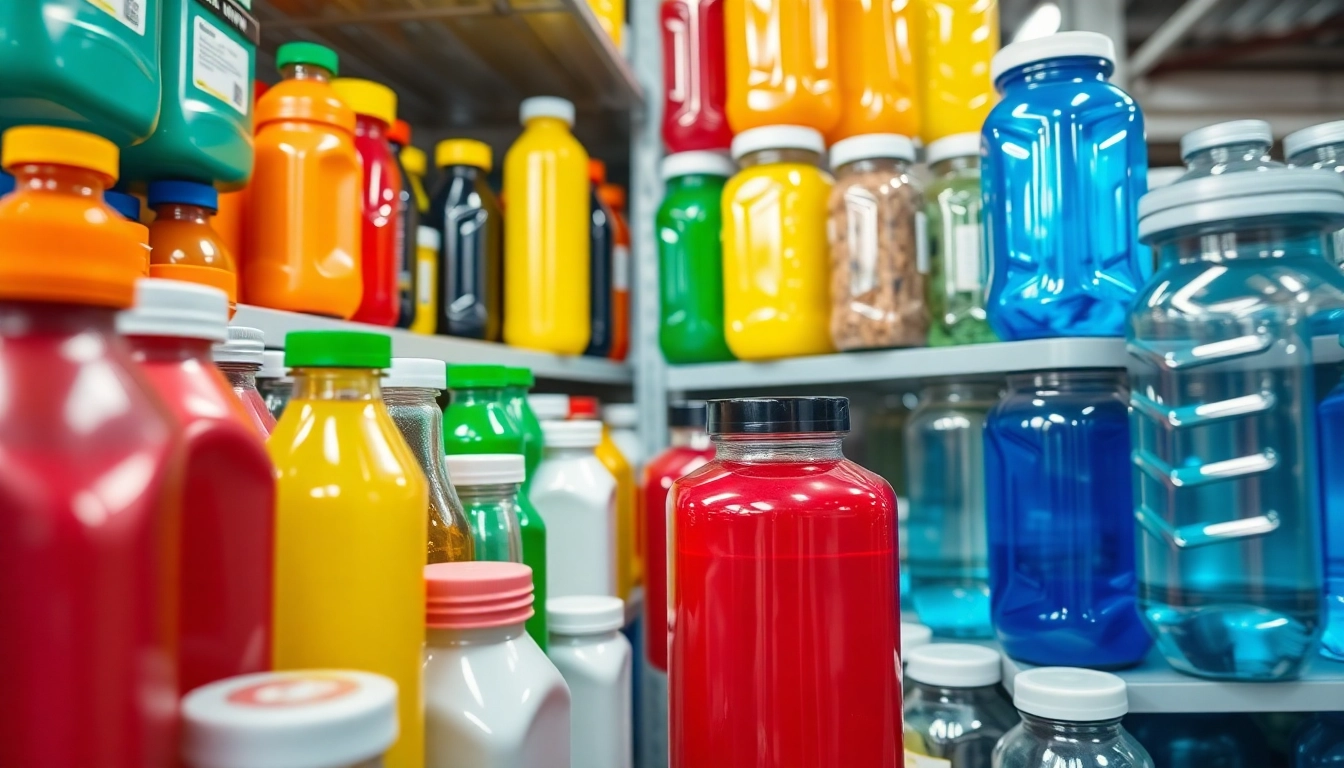Introduction to Plastic Sise and Packaging Solutions
In today’s fast-paced and globally interconnected marketplace, packaging plays a crucial role in product safety, branding, and consumer convenience. Among various packaging options, plastik şişe and plastic containers stand out for their versatility, durability, and cost-effectiveness. Whether for food, beverages, cosmetics, or industrial applications, choosing the appropriate plastic container requires understanding the diverse types of plastics, their applications, and the latest technological innovations. This article explores the comprehensive world of plastic containers, with a focus on plastic şişe, and how they integrate with glass products and accessories to meet contemporary packaging needs.
Understanding the Importance of Quality in Plastic Sise
The quality of plastic sise (bottles or containers) directly impacts product safety, shelf life, and customer satisfaction. High-quality plastics are designed to withstand various environmental factors, resist chemicals, and prevent leaching of harmful substances. Moreover, quality assurance ensures compliance with regulatory standards such as FDA, ISO, and PEGASUS certifications, building consumer trust. Manufacturers emphasize rigorous testing phases, including mechanical strength, permeability, and compatibility assessments, to guarantee that each plastic sise performs reliably across different conditions.
Types of Plastic Sise and Their Applications
Common Plastic Materials
Plastic sise are produced from a variety of polymers, each tailored to specific applications:
- Polyethylene Terephthalate (PET): Popular for beverage bottles due to its clarity, strength, and recyclability.
- High-Density Polyethylene (HDPE): Used for milk jugs, detergent bottles, and resistant packaging owing to its robustness and chemical resistance.
- Polypropylene (PP): Ideal for caps, closures, and containers requiring heat resistance and flexibility.
- Polyvinyl Chloride (PVC): Less common in food packaging but used for specialty bottles and industrial purposes.
Application Insights
Each material’s unique properties make it suitable for different industries, such as food and beverage, cosmetics, pharmaceuticals, and chemicals. Flexible design options, including custom shapes and sizes, enable brands to differentiate their products on retail shelves. For instance, PET bottles are lightweight and break-resistant, making them the top choice for bottled water brands. Conversely, HDPE’s durability lends itself well to large-volume containers and industrial packaging.
Market Trends in Plastic Container Packaging
The plastic packaging market is characterized by evolving consumer preferences and technological advances. Key trends include increasing demand for sustainable solutions, lightweight packaging to reduce transportation costs, and personalization through customization. The move towards recyclability and eco-conscious materials is particularly prominent, prompting manufacturers to invest in biodegradable plastics and dual-material solutions. Additionally, smart packaging incorporating sensors or tracking chips is gaining traction, enhancing traceability and consumer engagement.
Choosing the Right Plastic Sise for Your Business
Factors to Consider: Size, Material, and Design
Optimal selection involves evaluating the product’s volume, compatibility with the contents, handling requirements, and visual branding. Size considerations should balance storage convenience with transportation efficiency. Material choice impacts durability, barrier properties, and regulatory compliance. Design elements, including labeling, printing, and ergonomic features, influence brand presentation and user experience.
Customizing Plastic Sise for Branding and Functionality
Customization allows brands to differentiate their products. Techniques include embossed logos, vibrant color schemes, unique shapes, and innovative cap designs. Functional customizations, such as tamper-evident features or squeezable materials, enhance usability and safety. Partnering with manufacturers that offer flexible tooling and design consultation is essential for tailored packaging solutions.
Cost-Effectiveness and Sustainability Aspects
While initial costs vary based on material and design complexity, long-term savings are achieved through reduced material waste, logistical efficiency, and brand loyalty. Emphasizing eco-friendly practices—such as using recycled plastics or lightweighting—can also improve cost-effectiveness and align with consumer expectations for sustainability.
Manufacturing and Quality Assurance of Plastic Sise
Production Processes and Materials Used
Plastic containers are produced primarily via blow molding, injection molding, or thermoforming. These processes enable precise control over wall thickness, shape, and structural integrity. Advances in these technologies facilitate mass production with consistent quality, minimizing defects like air bubbles or warping.
Certifications and Quality Control Measures
Regular quality checks during manufacturing involve inspection of raw materials, dimensional accuracy, and pressure tests. Certifications such as ISO 9001 and ISO 22000 ensure adherence to international quality and safety standards. Additionally, batch testing for chemical residues and durability guarantees that products meet stringent regulatory requirements.
Innovations in Plastic Sise Technology
Emerging innovations include using biodegradable polymers, incorporating antimicrobial agents, and employing nanotechnology for enhanced barrier properties. Automation and AI-driven quality monitoring also enhance consistency and speed, reducing waste and ensuring rapid response to market demands.
Complementary Plastic and Glass Products
Plastic Kavanozlar for Food Storage
Plastic kavanozlar (jars) are widely used for preserving food, spices, and cosmetics. They offer excellent clarity, resealable options, and customizable sizes. Their lightweight nature reduces transportation costs while maintaining a high barrier to air and moisture.
Cam Ürünler for Premium Packaging
Glass products convey a sense of luxury and sustainability. They are ideal for premium beverages, perfumes, and specialty foods. Glass’ inert nature ensures no chemical interaction with contents, making it a preferred choice for high-end brands. Combining glass with plastic accessories like caps or sleeves enhances overall functionality.
Accessory Options to Enhance Packaging Efficiency
Accessories such as closures, pour spouts, seals, and labeling enhance usability and branding. Innovative features, including child-proof caps or tamper-evident seals, improve safety. Customizable accessories also add aesthetic value and functional convenience for customers.
Best Practices for Using and Maintaining Plastic Sise
Proper Handling and Usage Tips
To maximize lifespan, store plastic sise in cool, dry environments away from direct sunlight. Avoid exposing containers to extreme heat, which can deform or weaken them. Ensure containers are properly sealed to prevent leaks and contamination. Regular cleaning with mild detergents maintains hygiene and appearance.
Recycling and Eco-Friendly Disposal
Promoting recycling programs not only reduces environmental impact but also aligns with global trends toward sustainability. Proper sorting and disposal facilitate the reuse of raw materials, especially for PET and HDPE plastics. Many manufacturers now integrate recycled plastics into new production cycles, supporting circular economy initiatives.
Customer Support and Customization Services
Leading suppliers provide comprehensive support, including design consultations, sample testing, and large-scale production management. Offering customization services ensures companies can develop unique packaging that reinforces brand identity and meets specific functional needs.



